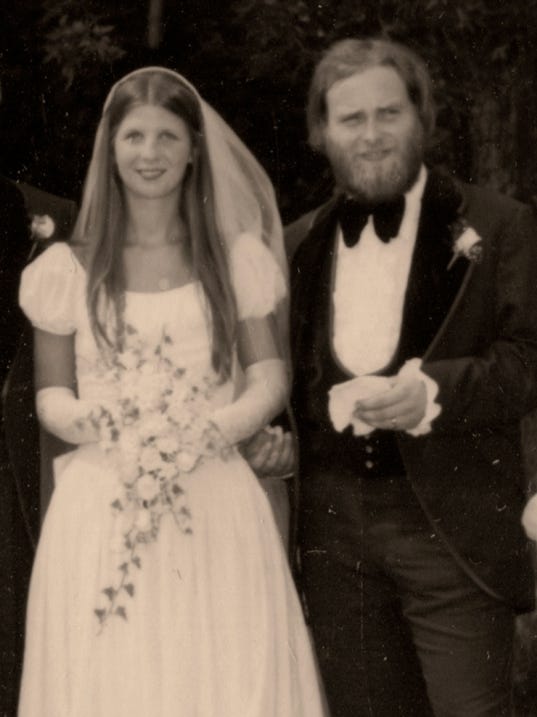In general, it's about love and marriage. More specifically, it's about saying yes to the dress, again and again.
Let's start with a small notice in a Buffalo newspaper. Three paragraphs. The first lets the reader know that Jean Wydysh and Donald Chappell were married on Aug. 2, 1947, at St. Francis Xavier Church.
The third paragraph gives the names of the people in the wedding party. It also says the bridal couple has left for Chicago, where Donald is a student.

"The white silk eyelet material from which the bride's dress was made was brought to this country from Japan by the bridegroom, who returned last May. It was fashioned with a round, shirred neckline, puffed sleeves, full skirt and long train. Her Juliet cap was of the same material. She carried white roses."
Flash forward 67 years. Jean Wydysh Chappell of Webster fills in the story of the dress.
She and Donald, who is deceased, had met roller-skating and dated before he left Buffalo for the Navy during World War II. He hadn't proposed, though it may not have been necessary.
"We didn't have a marriage plan; we were just kids," Jean says. "But we always knew it was going to happen."
And Donald, who served in occupied Japan after the war's end, must have had marriage in mind when he brought home 25 yards of silk — silk that was perfect for a wedding dress.
"I don't know why he did this," Jean says, with a smile. "He never explained."
Didn't have to. The proposal came. The wedding day arrived. And there Jean was in a gorgeous dress, full skirt, long train, the works.
As the paper noted, the couple then went off to Chicago, where they would live for three years before returning to Buffalo and then moving here after Donald took a job with Haloid, the precursor to Xerox Corp.
All the while, the dress was tucked away in a box in the Chappells' home until their daughter Joanne and Richard Seeley were planning their wedding.
"It was in storage, in a box with tissue paper, in a closet," Joanne says. " I pulled it out. Thank God for Webster Cleaners. They did some magic to bring it back. To restore it."
After a few alterations, the dress was ready for Joanne's wedding on Aug. 2, 1975, her mother's 28th anniversary.
Then the dress was put away in the same closet in the same house for nearly 40 years, until it was called into service again.
This Friday, Aug. 8, Cristin Seeley, Joanne's daughter and Jean's granddaughter, will be in the dress for her marriage to Dan Coleman in a ceremony at the Memorial Art Gallery. "I always assumed I was going to wear it," Cristin says.
Who's next?
"Who knows," Joanne says. "But each time someone resurrects the dress, a new chapter is added to our family history."
On Remarkable Rochester
Retired Senior Editor Jim Memmott reflects on what makes Rochester distinctively Rochester, its history, its habits, its people. Contact him at: (585) 278-8012 or jmemmott@DemocratandChronicle.com or Remarkable Rochester, Box 274, Geneseo, NY 14454.
Remarkable Rochesterians
A group of retirees from the Eastman Kodak Co. suggested adding the names of this extraordinary (and long-lived) couple to the list of Remarkable Rochesterians found at RocRoots:
Hilda Conrady Kingslake (1902- 2003): Born in London, England, she followed in the footsteps of her father, a professor of optics, studying under him and launching a career in research. In 1929, she came to Rochester, her husband, Rudolf, having been recruited to join the faculty of the University of Rochester. She continued her research, publishing extensively and establishing an international reputation.
Rudolf Kingslake (1903-2003): Brought to the University of Rochester by the school's president, Rush Rhees, the native of England came to Rochester in 1929 with his wife, Hilda. He founded the university's Institute of Optics and continued his connection to the school after he became the head of the Lens Design Department at Eastman Kodak Co. in 1937. He would serve as the president of the Optical Society of America and was published widely.
No comments:
Post a Comment